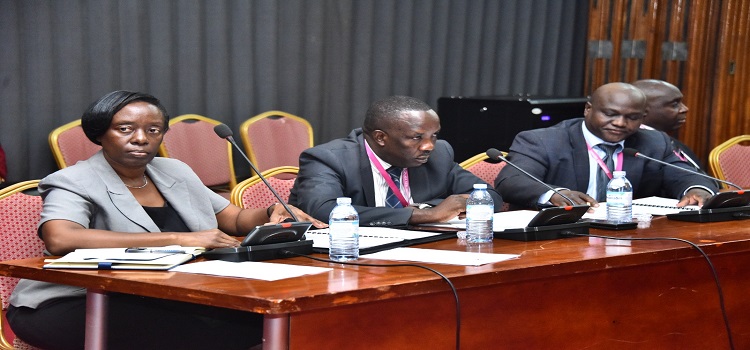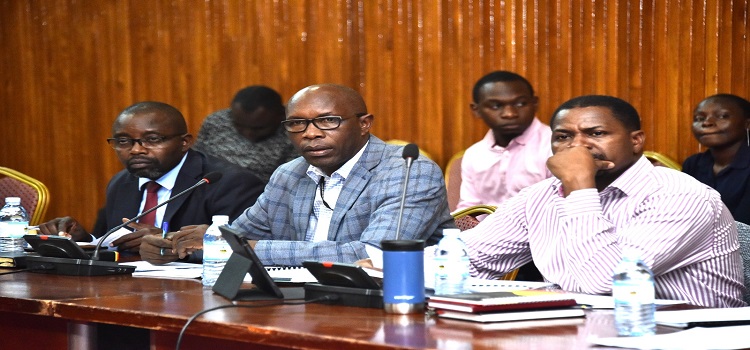Officials from Mulago Specialised Women and Neo-natal Hospital are tasked to explain why they were issued with letters of credit from the Bank of Uganda worth Shs4.07 billion despite the closure of the financial year.
While interfacing with the officials on Monday, 31 July 2023, Members of Parliament on the Public Accounts Committee (Central Government) wondered why the letters of credit were issued on 22 July 2022 after the closure of the 2021/2022 Financial Year.
The officials led by the Executive Director, Dr. Evelyn Nabunya appeared before the committee to respond to audit queries raised by the Auditor General.

Dr Nabunya (L) appearing before the committee with her colleagues from the hospital
According to the Auditor General, the letters of credit were issued for the procurement of specialised medical equipment (shs3.4 billion), an ambulance (shs390 million) and a pick-up vehicle (shs208.9 million).
Hon. Xavier Kyooma (NRM, Ibanda County North) observed that the money budgeted for vehicles was released but not all the vehicles were bought in the year under query.
“If money has been budgeted for and it is not spent, it is supposed to be sent back to the Consolidated Fund. Why did you have to get these letters of credit if you had not spent the money by the end of the financial year?” Kyooma asked.
Mubiru Muhammad, the Principal Hospital Administrator said the letters of credit were issued since the procurement process was ongoing by the time the financial year closed.
“The procurement process for these items had not been completed by the yearend and at the time of audit. The money for these purchases was transferred to the Bank of Uganda to be paid when the items were delivered,” Mubiru said.
Nabunya said that there were procurement delays for the vehicles, due to changes in specifications required by the hospital.
“We initially planned for an ambulance that had a small capacity but we discovered that it would not meet the specialised service needs offered by the hospital. We then applied for new approval of an ambulance that was of a higher capacity,” she said.
Nabunya added that funds were not enough to purchase the vehicles in the year under audit due to increased prices attributed to Covid-19.








